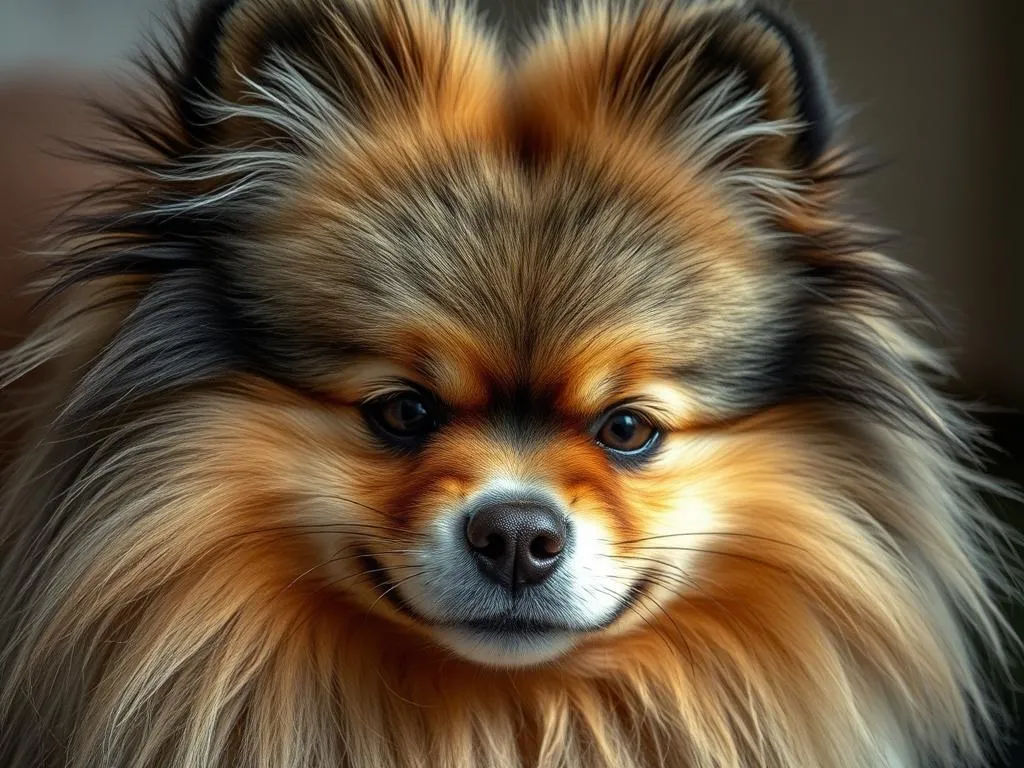
Introduction
Dog breeds have captivated human hearts for centuries, each offering unique characteristics and traits that appeal to various lifestyles. Among these breeds, the Pomeranian has become a favorite, known for its lively personality and striking appearance. One of the more intriguing variations within this breed is the merle Pomeranian. The term “merle” refers to a distinctive coat pattern characterized by mottled patches of color, which can add a unique flair to the already charming Pomeranian. Understanding the characteristics and variations of dog breeds is crucial for potential owners to ensure they choose the right companion for their lifestyle.
Understanding Dog Breeds
What Are Dog Breeds?
A dog breed is a specific group of domestic dogs with particular characteristics that distinguish them from other breeds. These characteristics can include size, coat type, color, and temperament. Breed standards, which are established by kennel clubs, help define these traits and provide guidelines for breeders to follow.
The Significance of Dog Breeding
Historically, dog breeding has served various purposes beyond companionship. Breeds were developed for specific tasks, such as herding, hunting, guarding, and more. Over time, the focus of breeding has evolved, with many breeds now primarily valued for their companionship and show potential.
Overview of Popular Dog Breeds
While the Pomeranian is an adored breed, others like Labradors, Golden Retrievers, and Bulldogs also rank high in popularity. Each breed brings its own unique qualities, and understanding these can help potential owners make informed decisions.
The Pomeranian Breed
History of the Pomeranian
The Pomeranian traces its roots back to the Spitz family of dogs, originating from the Arctic regions of Europe. They were initially larger working dogs used for herding and pulling sleds. Over time, the breed was refined to a smaller size, particularly in Pomerania, a region in modern-day Poland and Germany, hence the name.
Physical Characteristics
Pomeranians are small dogs, typically weighing between 3 to 7 pounds. They have a distinctive double coat that can be fluffy and voluminous. The breed comes in a variety of colors, from orange to cream and black. Notably, the merle Pomeranian introduces unique color combinations, often featuring patches of gray or blue mixed with other colors.
Temperament and Personality
Pomeranians are known for their spirited and lively personalities. They are generally friendly, intelligent, and eager to please, making them excellent companions. Their social nature means they often thrive in family environments and can get along well with other pets if properly socialized.
The Merle Pattern in Dogs
What is the Merle Pattern?
The merle pattern is a genetic trait that results in a mottled coat with patches of color. This pattern is not exclusive to Pomeranians; many breeds exhibit merle coats. The gene responsible for this pattern can affect the pigmentation of the dog’s fur, leading to striking and varied appearances.
Merle vs. Non-Merle Pomeranians
Merle Pomeranians differ visually from their non-merle counterparts. While standard Pomeranians exhibit solid or blended colors, merle Pomeranians showcase a captivating mix of colors that can include shades of blue, gray, and black. While there is no significant evidence suggesting differences in temperament solely based on coat color, some owners report unique behavioral traits in their merle Pomeranians, likely due to individual personality rather than color.
Controversy and Ethical Considerations
The breeding of merle dogs has raised ethical questions in the canine community. Critics argue that breeding for coat color, particularly merle, can lead to health issues, including vision and hearing problems. Responsible breeders prioritize health over aesthetics, ensuring that any breeding practices do not compromise the well-being of the dogs.
The Merle Pomeranian: A Unique Variation
Appearance of the Merle Pomeranian
The merle Pomeranian is a visual delight, with its unique coat patterns that can range from blue merle to chocolate merle, and everything in between. Each merle Pomeranian’s coat is a one-of-a-kind masterpiece, making them stand out in any crowd. The contrast of the merle pattern against the breed’s fluffy double coat adds to their appeal.
Care Requirements
Caring for a merle Pomeranian involves regular grooming to maintain their luxurious coat. This includes brushing several times a week to prevent matting and reduce shedding. Additionally, regular veterinary check-ups are crucial, especially considering the health risks associated with merle coloration. Keeping an eye on their dental health is also essential, as small breeds can be prone to dental issues.
Temperament of the Merle Pomeranian
While the general personality traits of a merle Pomeranian remain consistent with the breed, individual dogs may exhibit slight variations in behavior. Some owners have noted that merle Pomeranians can be a bit more energetic or spirited. Socializing them from a young age is vital to ensure they develop into well-rounded pets.
Health Considerations for Merle Pomeranians
Common Health Issues
Pomeranians, including merle Pomeranians, can be susceptible to several health issues. Common concerns include dental problems, patellar luxation, and heart conditions. The merle coat pattern can also be associated with certain health risks, such as vision and hearing impairments, particularly if both parents carry the merle gene.
Preventive Care
To ensure a healthy life for a merle Pomeranian, regular veterinary visits are essential. Responsible breeding practices are critical; potential owners should seek out breeders who conduct health screenings and genetic testing. This proactive approach can help mitigate some health risks associated with the breed and its unique coloration.
Training and Socialization
Basic Training for Pomeranians
Training a Pomeranian, including the merle variety, requires patience and consistency. These small dogs are intelligent and can learn commands quickly, but they also have a stubborn streak. Positive reinforcement methods, such as treats and praise, work best to encourage good behavior.
Socialization Techniques
Early socialization is crucial for merle Pomeranians. Introducing them to various environments, people, and other pets can help them develop into friendly and confident adults. Regular outings and playdates can foster positive interactions and reduce the likelihood of fear-based behaviors.
Finding a Merle Pomeranian
Where to Look
When searching for a merle Pomeranian, it’s essential to start with reputable breeders rather than pet stores. Responsible breeders prioritize the health and temperament of their dogs, providing potential owners with health clearances and documentation.
Questions to Ask Breeders
Inquiring about the breeding practices is vital. Potential owners should ask about health screenings, the lineage of the puppies, and any specific concerns related to the merle coat pattern. This information can help ensure that you are choosing a healthy puppy from a responsible source.
Adoption and Rescue Options
Adoption can be a wonderful option for acquiring a Pomeranian. Many breed-specific rescues focus on Pomeranians and may have merle variations available. Exploring adoption not only provides a loving home to a dog in need but can also be a more ethical choice.
Conclusion
The merle Pomeranian is a striking variation within the beloved Pomeranian breed, offering a unique combination of beauty and personality. While their distinctive coat patterns make them stand out, potential owners should be aware of the specific care and health considerations associated with this variety. As with all dog breeds, responsible pet ownership is crucial. Thorough research and a commitment to understanding the breed’s needs will ensure a happy and healthy life for any merle Pomeranian.









